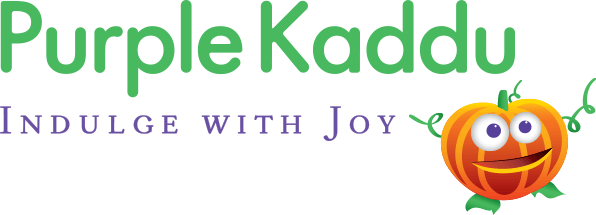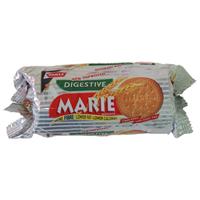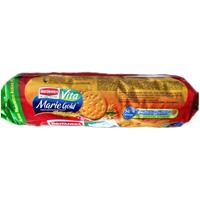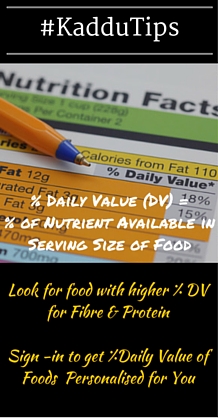
Parle Digestive Marie
Products in ‘Healthy-Light Biscuits’ category range from 1.5 - 3

Current Product

- Fibre SourceProduct with decent amount of Dietary Fibre (5%-10% of day's recommended intake) is better than a similar one with zero or negligible amount of fibre) - at least it's a start!Packaged foods generally do not have Dietary fibre so a product with some amount of dietary fibre is always welcome.Fibre is not a nutrient but plays a key role in managing your body regularities - Bowel movement - Keeping constipation at bay, a control on Blood Sugar spike and check on blood cholesterol.However, follow the principle of balance and don't go overboard by eating only fibre rich food.
- FAT - Get more of the Good than Bad !!While reading about FAT in food, you will come across terms : Saturated Fat, Unsaturated Fat (MUFA / PUFA), Trans Fat and Cholesterol.Saturated Fats (SFA) can increase the Cholesterol in the blood and thereby increase the risk of Heart Disease. Read the Nutrition Label and choose the product with less SFA.Monounsaturated Fat (MUFA) and Polyunsaturated Fats (PUFA) are the two types of unsaturated fats you will find on food package label. Monounsaturated Fat have a blood cholesterol lowering effect and can lower the risk of heart disease. It is recommended to include food with more MUFA and PUFA as compared to SFA in the diet to help reduce heart disease risks.Trans Fat not only increases the bad LDL cholesterol, but also reduces the good HDL cholesterol and hence should be avoided. Trans Fat are formed during the hydrogenation process where in the unsaturated fat is converted to hydrogenated fat / oil to increase shelf life. Look out for Hydrogenated or Partially Hydrogenated Fat / Oil in the ingredients in the label as these products would have Trans Fat.Cholesterol is only found in food from animal source such as milk. Our bodies create most of required cholesterol and hence consumption of food with cholesterol should be limited.All Fat is not bad ! Look for the products which have more MUFA, PUFA and avoid those with more SFA, Trans Fat and Cholesterol.
- Food Sensitivity Alert - Soy (Lecithin)Lecithin is naturally available from soya bean (Plant source) and from egg yolk (Animal Source).A product marked as Vegetarian is likely to get its Lecithin from soya bean plant. It should be noted that Lecithin is produced from Soya bean oil, hence does not include Soy protein. As a result people with soya sensitivity may not get affected by it.Consume this product based on your sensitivity towards Soy and Lecithin.
- High in Saturated FatSaturated Fats are often termed as the Bad Fat as excess consumption of these can lead to increase in the production of high cholesterol, atherosclerosis (thickening of artery walls) and strokes.
On the other hand, there are recent reports that Saturated Fats may not be all bad.Saturated Fats is not only synthesised by the body as part of metabolism but also makes it way in your diet through various raw ingredientsThus, you should limit eating food with added Saturated Fat. - High in SugarSugar is a source of Instant Energy which if not used mainly by muscles, is stored as Fat.One of the immediate side effects of High Sugar diet is insulin surge and increase in fat deposits in the body.Long term use of diets high in sugar are linked to increased risk for diabetes, obesity and contributes to cravings, mood swings, PMS, and a host of other conditions. Also, some studies suggest that its not FAT but sugar that is the cause for higher intake calorie and excess weight gain. Now no need to go to other extreme and drop sugar completely from your diet.So, it is better to limit the consuming products like these which are high in sugar or better still avoid them.
- Highly Processed!Additives are added to the packaged foods for different reasons varying from increasing shelf life, to provide flavour and texture, increasing nutrition quality or required to manufacture some types of food.One of the ways to determine the degree of Processing is the number of additives you find in the ingredient list. The higher the number of additives greater is the degree of processing. Additives can be identified by looking for ingredients that begin with 'E' and have a number in them.It is generally recommended that food that is closer to nature is better hence it is better to choose food products with lesser number of additives.
Disclaimer:Product Analysis is based on general practices in the field of Nutrition. Please check with or consult a qualified and licensed medical professional for its suitability to you.













